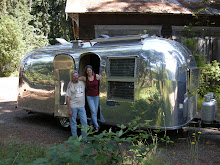
 While we were in Apalachicola, I met up with Captain Ed Daniel who operates a small tour operation out of the Scipio Creek Marina that he calls the “Eco-Explorer” and he was kind enough to invite me on his boat for an afternoon cruise. Captain Ed is not only an expert on the history of the area, he knows the swamps like the back of his hand, and gives an excellent non-stop narrative as he takes you first along the towns old waterfront, out to the mouth of the harbor, up the Apalachicola River and finally into the swamp and marsh areas nearby. For over two hours Captain Ed treated us to dolphins as they played in the waters at the mouth of the bay, the nesting places of a number of birds, and my personal favorite two huge alligators nestled in the reeds and basking in the sun by the side of the channel.
While we were in Apalachicola, I met up with Captain Ed Daniel who operates a small tour operation out of the Scipio Creek Marina that he calls the “Eco-Explorer” and he was kind enough to invite me on his boat for an afternoon cruise. Captain Ed is not only an expert on the history of the area, he knows the swamps like the back of his hand, and gives an excellent non-stop narrative as he takes you first along the towns old waterfront, out to the mouth of the harbor, up the Apalachicola River and finally into the swamp and marsh areas nearby. For over two hours Captain Ed treated us to dolphins as they played in the waters at the mouth of the bay, the nesting places of a number of birds, and my personal favorite two huge alligators nestled in the reeds and basking in the sun by the side of the channel.In the process, he gave us a detailed account of the area from the viewpoint of a man who clearly loves nature. The history of this river and the massive wetlands it supports is full of the misguided efforts of man to change it. In nearby Tate’s Hell National Forest, (named for an early settler who was lost there for ten days before stumbling out and exclaiming “I’ve just been through hell” just before he died), the loggers who had cut down all the Cypress trees which grow well in a swamp were left with just a swamp. Their disastrous attempts to drain it so that they could cultivate the faster growing Pine trees included building miles and miles of drainage ditches that today continue to hamper the efforts of naturalist to restore the swamp to its original state. In the middle of the swamp, Captain Ed pointed out a “cut” between two channels that some lazy fisherman had made a number of years earlier so that they could pull their boat between the channels. Although the channels run side by side only a few yards apart, they are at slightly different levels, and to this day, water flows from the higher channel into the lower one, disrupting the natural flow. A little deeper in the swamp we came across a couple of “hunting camps” that consisted of small floating barges with a shanty shack perched upon them. While not technically illegal, these hunting shacks push the limits in this protected area and local conservationists are pushing hard for their removal.
Captain Ed is not really an “environmentalist” in the traditional sense of the word, but more of a conservationist. Like many who have spent their lives on the water, his concern for the environment comes from his understanding that to continue to enjoy this natural beauty, we must protect it. I can only imagine his horror as the oil from this spill approaches. Having met Captain Ed, and the wonderful people of Apalach makes this disaster even more personal for me, and I wish them and all the residents of the Gulf Coast my best. If you find yourself in Apalachicola, look Captain Ed up and take one of his Eco-Tours, you will truly enjoy it.
For more info visit Captain Ed's website at:
www.ecoexplorercruises.com
For more photos of the Forgotten Coast visit our website at:
www.ecodiscoverytour.com






